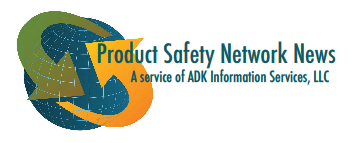MIXED REVIEW ON FIDGET SPINNER STATUS
>Fidget spinner catches on fire
July 7, 2017, wkrg-tv
Fidget spinners are everywhere but are they a fire hazard? A family in Gardendale, Alabama says their fidget spinner burst into flames after being put on the charger. There have been warnings about fidget spinners being a choking hazard. The Consumer Product Safety Commission is looking into the incidents of choking.
>Opinion: Do fidget spinners really help children with Autism and ADHD?
July 5, 2017, Huffington Post
The devices have become hugely popular since they started trending in late January 2017. It’s estimated that by May of the same year, fidget spinners accounted for 17 per cent of all online toy sales. And, in June 2017, the devices were still the best-selling toy on amazon.com. It’s notable that many online descriptions of product features include references to disabilities, including Autism Spectrum Disorder (ASD), ADHD, and anxiety. It’s hard to say if they help in such cases.
>The fidget spinner trend is ending and you missed it.
June 5, 2017, Fortune
The rise of the popular toy has been so seismic that e-commerce data firm Slice Intelligence estimated that in May, 2017 the toy accounted for 17% of daily online sales. Here are some factors that account for a slowdown in growth trends.
CPSC Holding workshop on recall effectiveness
June 13, 2017, Federal Register
The Consumer Product Safety Commission staff is holding a workshop on potential ways to improve the effectiveness of consumer product recalls. The workshop will be held on July 25, 2017. The workshop, which is free to attend, will be held in the Hearing Room at CPSC’s headquarters at: 4330 East West Highway, Bethesda, MD 20814. Interested individuals can register online at: https://cpsc.gov/content/cpsc-workshop-on-recall-effectiveness
Retailers and producers tussle over Prop 65 obligations
July 3, 2017, Chemical Watch
A full year before they go into effect, last year’s amendments to California Proposition 65 regulations have changed the terms of the duel between suppliers and retailers over who will provide the required consumer warnings, and spawned confusion over what chemicals to single out, according to lawyers who advise businesses on Prop 65 compliance.
Controversy, Questions Surround California’s Listing Of Weed Killer As Cancer Cause
July 7, 2017, Huffington Post
California’s official listing under the provisions of Proposition 65 of the world’s most widely used weed killer as a known carcinogen marks a milestone in what has been years of debate over the safety of the pesticide called glyphosate. But it by no means marks the end of controversy over the chemical or arguments over what warnings – if any – should be placed on an herbicide that is a mainstay for U.S. farming and for maintaining household lawns and gardens, city parks and school grounds.
Canada amends the sizing requirement designed for infant sleepwear
July 3, 2017, 4-traders
Health Canada revised its policy on infant sleepwear sizing to align with US requirements. The policy change is effective immediately. In Canada, sleepwear designed for infants weighing up to 7 kg is defined as tight-fitting sleepwear and is regulated under Section 2 of the Children’s Sleepwear Regulations (SOR/2016-169) under the Canada Consumer Product Safety Act.
University-level consumer product safety management course features experts, focus on national and global change
July 5, 2017, EIN News Wire
Navigating the regulatory world under new national leadership, changing factors in company compliance plans, and safety intervention for human errors…these are among the topics featured at the 6th annual advanced product safety management course at Saint Louis University’s John Cook School of Business. The 2017 advanced program provides a university certificate to those completing the course. The program is offered on-campus September 25-29, through the university’s Center for Supply Chain Management in cooperation with ADK Information Services, LLC.
5 Critical steps to avoid product recall disasters
July 5, 2017, ebonline
Having the right systems and processes in place to mitigate the impact of product recalls and can make the difference between a blip on the radar screen and a full-scale supply chain, business, and branding catastrophe. One consultant points to 5 elements of an effective recall: 1. Preparation 2. Notification and response 3. Recall retrieval 4. Processing, remedy, and disposal, and 5. Sustainability
Opinion: How Mark Cuban Could Be Saving the Hoverboard
July 6, 2017. Promomarketing.com
It seems the Consumer Product Safety Commission damnation and multiple tragedies caused by hoverboards weren’t enough to fully take them off the market, as the hoverboard is getting the “Shark Tank” (or Dallas Mavericks) treatment. Just make sure you don’t call this model a toy, because it’s seriously meant for serious adults, apparently.
EU lawmakers call for a right to repair electronic equipment
July 3, 2017, IDG News Service
Electronic devices should be robust and easily repairable — and laws should encourage or enforce this, according to members of the European Parliament. They want to end the planned obsolescence of consumer electronics devices and software — which are often also used as business tools thanks to the consumerization of IT. One of their recommendations could help avoid a repeat of the Galaxy Note7 debacle: Batteries should be removable unless safety dictates that they be glued into the product


